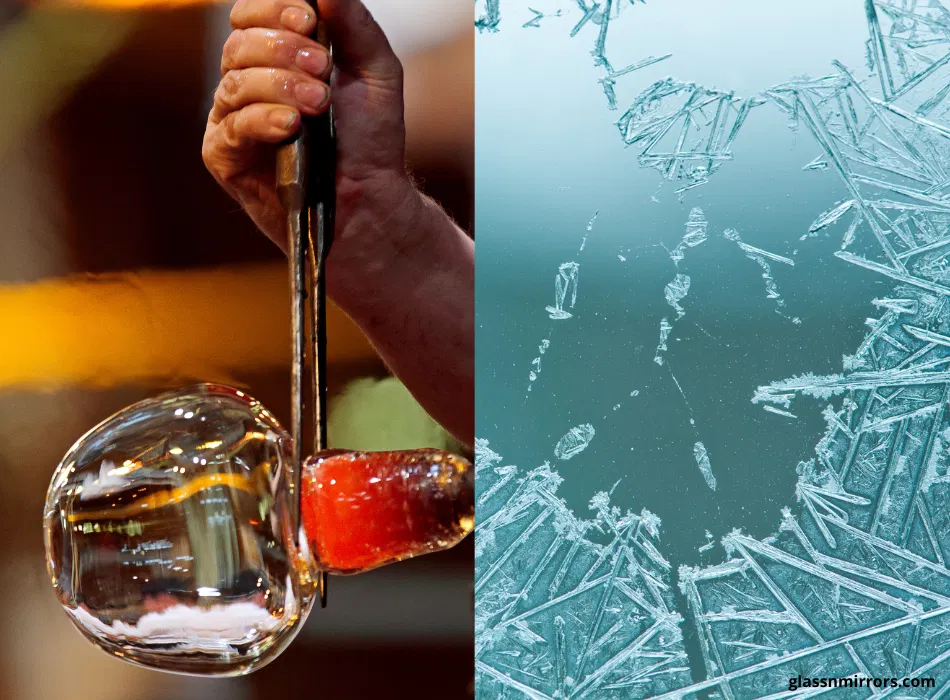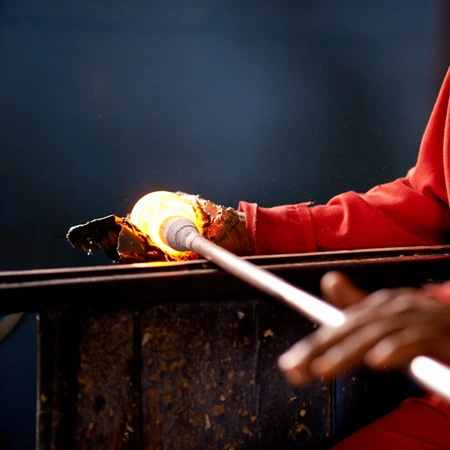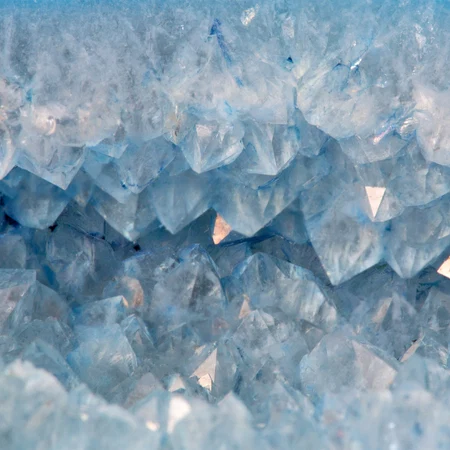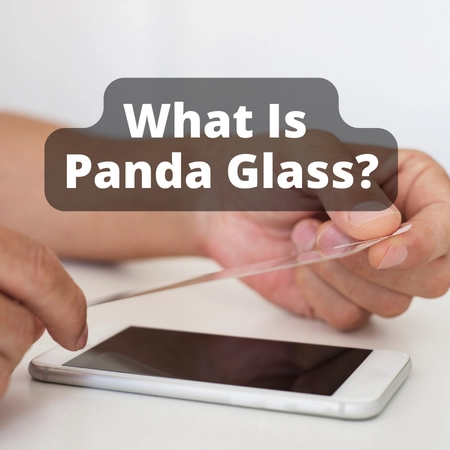When most people think of glass, they probably think of windows or drinking glasses. But there is a lot more to glass than that. In fact, there are two main types of glass: hot glass and cold glass. Both have their unique properties, which I will discuss in this article. So, what’s the difference between hot and cold glass?
The main difference between the hot and cold glass is their appearance below 1200°F (648°C) and their temperature at which they are made. Hot glass is more pliable, while cold glass is harder and less flexible. Also, hot glass has a lower melting point, which can easily be molded into different shapes. On the other hand, cold glass has a higher melting point and is not as easy to mold.
In this blog post, I will discuss the difference between hot and cold glass and its uses. I will also give tips on choosing the best glass for your needs.

Table of Contents
- 1 Hot Glass vs. Cold Glass
- 2 What’s the Difference between Hot and Cold Glass?
- 3 Does Hot Glass Look the Same as Cold Glass?
- 4 Is Hot Glass More Breakable?
- 5 Is Hot Glass Heavier Than Cold Glass?
- 6 What Happens When Hot Glass Touches Cold Glass?
- 7 Can You Pour Hot Water into a Cold Glass?
- 8 Can You Pour Cold Water into a Hot Glass?
- 9 Can Glass Crack from Hot to Cold?
- 10 Will Hot Glass Break in the Freezer?
- 11 Can Hot Glass Go into the Oven?
- 12 Is Hot Glass More Expensive Than Cold Glass?
- 13 Can You Cut Hot Glass?
- 14 How To Stop Glass from Cracking When Cooling
- 15 Final Thoughts – Hot Glass vs Cold Glass
- 16 Hot Glass vs Cold Glass – What’s The Difference?
- 17 Can Quartz Be Made Into Glass? Guide On Quartz & Glass
- 18 What Is Panda Glass | Ultimate Guide To Panda Glass
- 19 What Is A Vanity Mirror – And Which One You Should Pick
Hot Glass vs. Cold Glass
Before I look at the differences between hot and cold glass, let me first explain each type of glass.
Hot Glass
Hot glass is, as the name suggests, glass that is heated to high temperatures. It is then placed into a furnace where it is melted down. Once the glass has reached the desired temperature, it can be blown or molded into different shapes.
Hot glass is more pliable than cold glass and has a lower melting point. This means that it can easily be molded into different shapes. Hot glass is often used to make vases, bowls, and other household items.
The most common way to work with hot glass is by using a furnace. A furnace is a device that heats the glass to high temperatures. Furnaces are used in various industries, including glassmaking, metallurgy, and ceramics.
Various fuel sources, including natural gas, propane, oil, electricity, and wood, can be powered by furnaces. Hot glass is often used to make drinking glasses, vases, sculptures, and jewelry.
Did you know…Hot glass and cold glass are both heated!
Cold Glass
On the other hand, cold glass is not heated to such high temperatures. It is usually only heated to about 600 degrees Fahrenheit. The cold glass is then placed into a mold, where it cools down and hardens.
Cold glass has a higher melting point than hot glass and is not as easy to mold. However, it is more robust and more durable. Cold glass is often used to make windows, mirrors, and other household items.
The cold glass is typically referred to as pyrex glass. It is advised to avoid excessively low temperatures while using pyrex since extremely cold dishes are prone to breaking. Due to the risk of breaking and shattering caused by sudden temperature fluctuations, cold dishes should not be used in hot ovens.
However, if you put the dish in a cold oven and turn it on later, some of the cold glass’s surfaces will be exposed to extreme heat for longer (when the oven is heating up). On the other hand, a few areas of the cold glass will continue to be cool. The cold glass is tested to withstand temperatures up to 100 degrees Fahrenheit.
What’s the Difference between Hot and Cold Glass?
One of the main differences between hot and cold glass is their appearance above 1200°F (648°C). Hot glass is more pliable, while cold glass is harder and less flexible.
Other Differences include:
Melting Point
Also, hot glass has a lower melting point, which can easily be molded into different shapes. On the other hand, cold glass has a higher melting point and is not as easy to mold.
Uses
Hot glass is often used to make vases, bowls, and other household items. The most common way to work with hot glass is by using a furnace. Hot glass is also used to make drinking glasses, vases, sculpture, and jewelry.
On the other hand, cold glass is often used to make windows, mirrors, and other household items. The cold glass is typically referred to as pyrex glass. Pyrex is a brand name for borosilicate glass.
Does Hot Glass Look the Same as Cold Glass?
Up to a point, hot glass looks like cold glass. Glass doesn’t change its appearance below 1200°F (648°C). The phrase “cold glass looks exactly like hot glass” is one to remember in the lab or kitchen since this is enough heat to burn you.
Have you ever removed a Pyrex baking dish? It looks ordinary and is between 300 and 500 degrees.
Something extraordinary begins to occur at about 1200°F (648°C). As the glass starts to melt, it also starts to GLOW with light. It starts off a dull red, orange, and yellow and finally turns white hot. (https://foodandfizz.com/does-hot-glass-look-the-same-as-cold-glass/ ) The glass flows like warm honey at that temperature. It will flow like water when it gets to higher temperatures.
When making a heated glass marble, you notice that the left side is hotter than the right. The glass rod on the right, which seems completely cold, is quite hot, perhaps between 800 and 900 degrees Fahrenheit. The marble will break off, roll across the floor, and ignite the studio if it gets any colder than that.
Is Hot Glass More Breakable?
Hot glass is not more breakable. In fact, it is quite strong and can withstand a lot of heat. On the other hand, cold glass is more fragile and prone to breaking.
For a glass to break, there needs to be a sudden temperature change. See my article can heat break glass which explains more. When the glass is heated slowly, it has time to adjust to the changing temperatures and will not break. However, if the glass is heated quickly or if it is exposed to extreme cold, it can shatter.
Is Hot Glass Heavier Than Cold Glass?
Hot glass is heavier than cold glass because it is denser. But this difference is not much. When the glass is heated, the molecules expand, and the glass becomes less dense. On the other hand, when the glass is cooled, the molecules contract, and the glass becomes denser.
The weight of hot glass can vary depending on how much heat is applied. For example, if you take a piece of glass and heat it to 1500 degrees Fahrenheit, it will be about 20% heavier than when it was at room temperature. However, if you take the same piece of glass and heat it to 2000 degrees Fahrenheit, it will be about 40% heavier than when it was at room temperature.
What Happens When Hot Glass Touches Cold Glass?
You should not allow hot glass to touch cold glass because it can cause the hot glass to break. When hot glass touches cold glass, there is a sudden change in temperature, and the hot glass can shatter.
It is also important to avoid using ice water to cool down hot glass because this can also cause the hot glass to break. You should use room-temperature water instead.
Hot glass can also break if it is placed on a cold surface, such as a countertop or table. You should always place hot glass on a heat-resistant surface to avoid shattering.
Can You Pour Hot Water into a Cold Glass?
You should not pour hot water into a cold glass because it can cause the glass to break. When hot water touches cold glass, there is a sudden change in temperature, and the glass can shatter.
When you pour hot water into an ice-cold glass, the inner layer of the glass absorbs heat and expands as all the other materials do. The outer layer of glass is cold, while the inner layer is extremely hot. This causes the glass to shatter due to extreme temperature changes.
You should always use room-temperature water when pouring into a glass to avoid shattering.
Can You Pour Cold Water into a Hot Glass?
You can pour cold water into a hot glass. In fact, this is often done to help cool down the glass and prevent it from shattering. However, you should be careful not to pour too much cold water into the glass at once, as this can cause the hot glass to break. Slowly add room-temperature water until the glass has cooled down to a safe temperature.
When pouring cold water into hot glass, the inner layer of the glass absorbs heat and expands as all the other materials do. The outer layer of glass is hot, while the inner layer is extremely cold. This can cause the glass to shatter due to extreme temperature changes.
You should always use room-temperature water when pouring into a glass to avoid shattering. Slowly add cold water until the glass has cooled down to a safe temperature.
Pouring cold water into a hot glass can also help to prevent the formation of cracks. Cracks can form when there is a sudden change in temperature, such as when you pour hot water into a cold glass. By slowly adding cold water to the hot glass, you can help to prevent these cracks from forming.
Can Glass Crack from Hot to Cold?
Glass can crack from hot to cold. When glass is heated, the molecules expand. Suppose the glass is then exposed to extreme cold, such as ice water; the molecules contract quickly. This sudden change in temperature can cause the glass to crack.
It is important to avoid using ice water to cool down hot glass because this can cause the glass to crack. You should use room-temperature water instead.
Can Glass shatter from Cold to Hot?
Glass can also shatter from cold to hot when glass is cooled and the molecules contract. If the glass is then exposed to extreme heat, such as a fire, the molecules expand quickly. This sudden change in temperature can cause the glass to crack.
Will Hot Glass Break in the Freezer?
Hot glass may or may not break when you put it in the freezer. It all depends on how quickly the glass is cooled. If you put hot glass in the freezer and the temperature changes too quickly, the glass can break.
It is important to very careful about thermal shock. Thermal shock is when a material is exposed to extreme changes in temperature. This can cause the material to break, and hot glass is no exception.
When putting hot glass in the freezer, you should do it slowly so that the glass has time to adjust to the changing temperatures. You should also ensure the glass is freezer safe before putting it in the freezer.
Can Hot Glass Go into the Oven?
You can put hot glass in the oven, but you need to be careful. When heated, glass can expand and break if it is placed on a cold surface or exposed to extreme temperature changes. It is important to place hot glass on a heat-resistant surface to avoid shattering. You should also avoid using ice water to cool down hot glass because this can cause the glass to break.
Is Hot Glass More Expensive Than Cold Glass?
Hot glass is not necessarily more expensive than cold glass. It all depends on the type of glass and how it is made. Some types of hot glass are more expensive because they are harder to make.
Can You Cut Hot Glass?
You can cut hot glass, but you need to be careful. When heated, glass can expand and break if it is placed on a cold surface or exposed to extreme temperature changes.
How To Stop Glass from Cracking When Cooling
You can stop glass from cracking through Annealing. This is the process of slowly cooling hot glass to relieve stress and prevent cracking. It involves soaking during the cooling process to allow the glass to adjust slowly to changes in temperature. This process is often used for hand-blown or artistic glass because it helps to prevent cracking.
Final Thoughts – Hot Glass vs Cold Glass
The difference between hot glass and cold glass is the temperature at which they are made. Hot glass is made at a high temperature, while cold glass is made at a low temperature.
You can also see a difference in color when the temperature is more than 1200°F (648°C). I hope this article has helped you understand the difference between hot glass and cold glass. Thanks for reading.

Hot Glass vs Cold Glass – What’s The Difference?

Can Quartz Be Made Into Glass? Guide On Quartz & Glass

What Is Panda Glass | Ultimate Guide To Panda Glass


2 thoughts on “Hot Glass vs Cold Glass – What’s The Difference?”
Comments are closed.